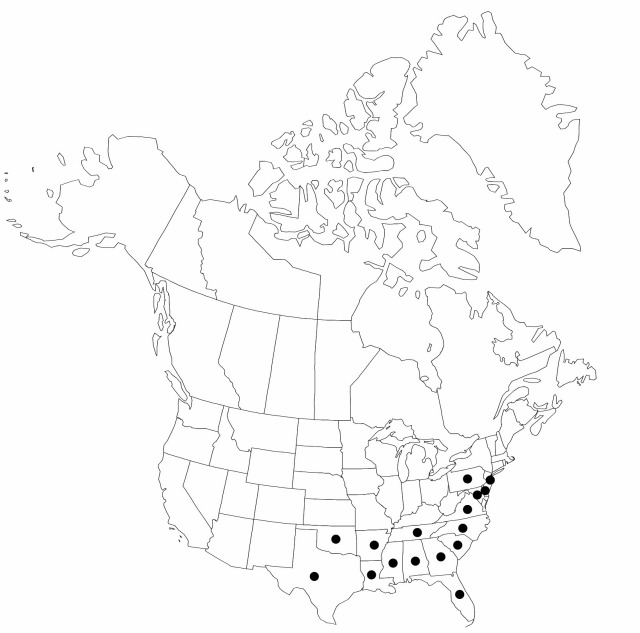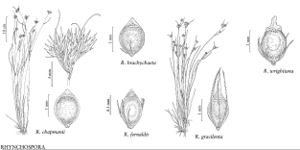Rhynchospora gracilenta
Ann. Lyceum Nat. Hist. New York 3: 216. 1835.
Plants perennial, densely cespitose or solitary, 10–100 cm; rhizomes absent. Culms mostly lax, ascending to leaningexcurved, leafy, linear to filiform, terete. Leaves shorter than culm; blades ascending, filiform to narrowly linear, proximally flat, 0.5–1.5 (–2.5) mm wide, margins distally strongly involute, apex trigonous, tapering. Inflorescences: spikelet clusters 1–3 (–4), proximalmost distant, dense to sparse, narrowly turbinate to hemispheric; peduncles and branches ascending; leafy bracts linearsetaceous, mostly overtopping clusters. Spikelets redbrown, ovoid to lanceoloid, (3.5–) 4–5 mm, apex acute; fertile scales ovate, 3–4.5 mm, apex acute, mucronate to awnedcuspidate. Flowers: bristles 6, mostly reaching tip of tubercle or beyond, antrorsely barbellate. Fruits 1–3 per spikelet, (2.5–) 3–3.5 (–4.1) mm; body dark-brown with small pale center, lenticular, broadly ellipsoid to suborbicular, 1.3–2.1 × 1.3–1.5 mm, smooth, margins narrow, flowing into tubercle; tubercle triangularsubulate, compressed, mostly 1.5–2 mm.
Phenology: Fruiting late spring–fall.
Habitat: Moist to wet sandy peaty substrates in ditches, bogs, seeps, wet savannas, barrens, and flatwoods
Elevation: 0–400 m
Distribution

Ala., Ark., Del., Fla., Ga., La., Md., Miss., N.J., N.C., Okla., Pa., S.C., Tenn., Tex., Va., West Indies (Cuba), Central America
Discussion
Through the southern coastal plain are widerleaved examples of Rhynchospora gracilenta that are sparingly cespitose to solitary-stemmed, often with but a single terminal inflorescence with dense clusters of spikelets (var. diversifolia). That would be a tenable designation were it not for the large numbers of populations with intermediate habit.
Selected References
None.
Lower Taxa
"shortened" is not a number."wider" is not a number.
